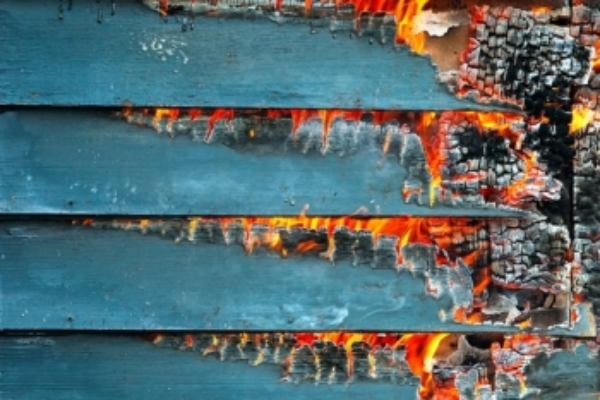
Water damage may be one of the most common reasons homeowners make claims on their home insurance, but house fires can destroy homes and lives.
According to the National Fire Protection Association (NFPA), home fires caused $6.8 billion in direct property damages in 2013, along with 12,200 injuries and 2,755 deaths.
The NFPA also states that a home structure fire was reported every 85 seconds. While it's the job of a home inspector to point out potential fire risks to home buyers, real estate agents can also help their clients with fire prevention strategies. This starts by having a full understanding of the dangers of house fires and their most common causes.
Fire Prevention Strategies
Once a spark begins, fire moves quickly. A small flame can rapidly evolve into a major home fire in just under 30 seconds, according to Ready.gov. Within a few minutes, the bulk of the home can fill with flames or thick, black smoke that produces complete darkness. Many dangerous fires occur when people are asleep. A high percentage of the time, residents suffer more from toxic fumes than from the heat of the flames themselves.
Valuables are replaceable; lives are not. All homeowners should know they should grab other household members and pets and immediately escape through the nearest exit. However, the first thought on your client's mind after settling into a new home probably isn't to create an evacuation plan. Real estate agents may be wise to provide suggested home evacuation routes to their clients before they transaction is closed.
Home inspectors may check for smoke detectors and fire sprinklers, but real estate agents can get involved by pointing out their locations to clients and discussing how to make sure they run properly. For instance, encourage your client to check whether there is a smoke alarm in each bedroom. If the home was built in 2006 or later, it should come equipped with fire sprinklers. If the home is older and doesn't have them, you may want to suggest your client get them installed. Sprinklers reduce the risk of property damage from fire by 71 percent and the risk of death by 80 percent, according to US Fire Administration data shared in the Atlanta Journal Constitution.
Checking for Fire Risks
Cooking is the number one cause of house fires, accounting for 43 percent of house fires between 2007 and 2011, according to the NFPA. You may want to remind your clients to store a fire extinguisher in the kitchen. The second most common source of home fires is heating equipment (16 percent). If the home inspector doesn't check the heating equipment, make sure your clients do. The same goes for electrical distribution and lighting equipment (8 percent), such as frayed wires and high-wattage light bulbs, and washing machines and dryers (4 percent).
Because the highest percentage of fires originate in the kitchen or other cooking areas, the peak time for home fires is between 5 p.m. and 8 p.m., according to a 2011 Journal NFPA report. Only 8 percent of house fires started in the bedroom during the report's analysis period of 2005 and 2008, but 20 percent ignited between 11 p.m. and 7 a.m. Half of all home fire deaths occurred during this typical sleep period.
Smokey Bear's famous slogan, "Only you can prevent forest fires," is true for homeowners and house fires as well. The vast majority of fires are accidentally caused by property owners as opposed to external factors such as lightning, direct actions or negligence, or insufficient home maintenance. Agents, homeowners, and home inspectors should walk the entire home together so they may all learn about the potential risks and how to take action to minimize them.
